Meiosis
Produces either sperm eggs or pollen
Starts with one human cell containing 46 chromosomes
Ends up with
4 cells each containing 23 chromosomes
These 4 cells are either
4 eggs of animal or plants
or
4 sperm of animal or pollen for plants
NOTE:
After Meiosis
- If 4 sperm are produced one may join with a human egg
- If pollen are produced they may join with plant eggs
- If 4 human eggs are produced one may join with a sperm
- If plant eggs are produced they may join with pollen
Lets follow specifically human meiosis
Meiosis starts with a cell. This is a normal cell containing 46 chromosomes, 23 come from your mother and 23 come from your father.
It starts with one human cell containing 46 chromosomes.
Parent cell (Diploid)
46 chromosomes
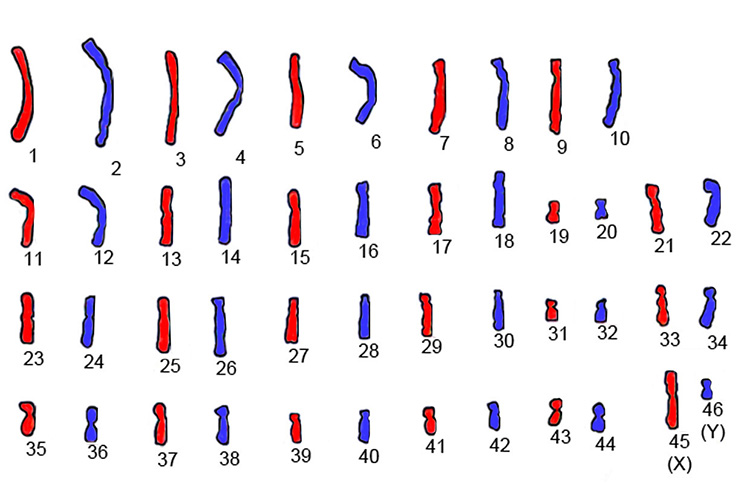
Diploid or Di means two
Diploid - a cell containing two complete
sets of chromosomes one from each parent
The chromosomes are copied and each one remains attached to the chromosome it was copied from to form an X shape. Each chromosome X shape inherited from one parent matches itself up with the corresponding chromosome from the other parent.
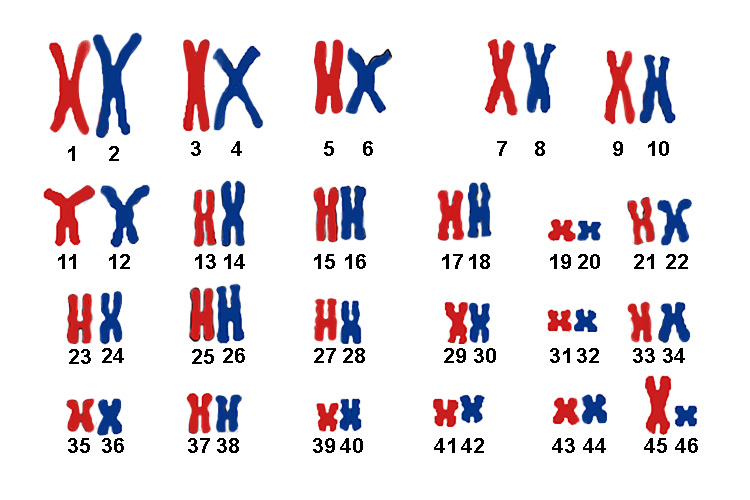
When its found its match it then joins the two X shapes. During this phase genes inherited from one parent may be transferred over to the matching chromosome inherited from the other parent in a process known as crossing over (shown by red moving onto blue and vice versa). Crossing over produces genetic variation.
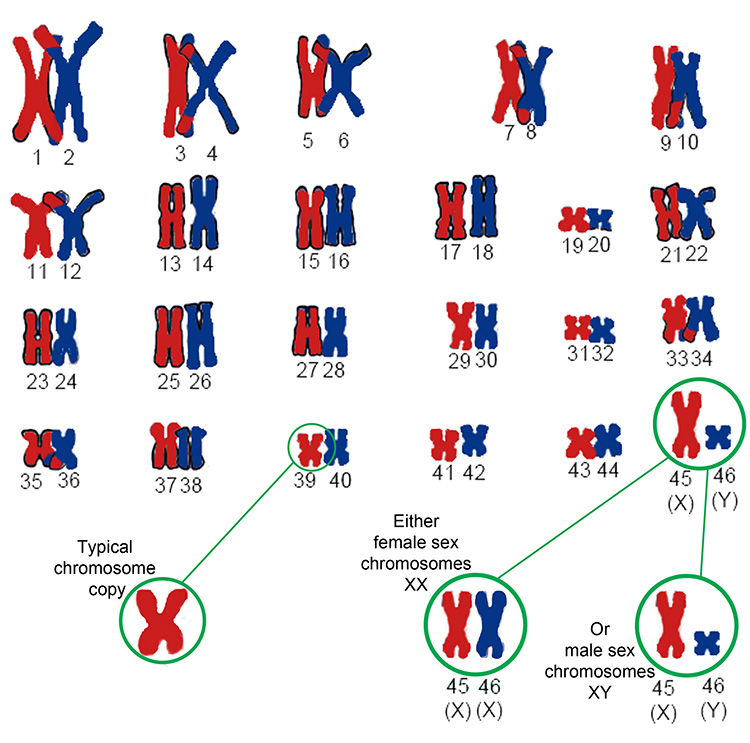
All the matched chromosomes form a line down the middle of the cell.
See matched chromosomes in a line
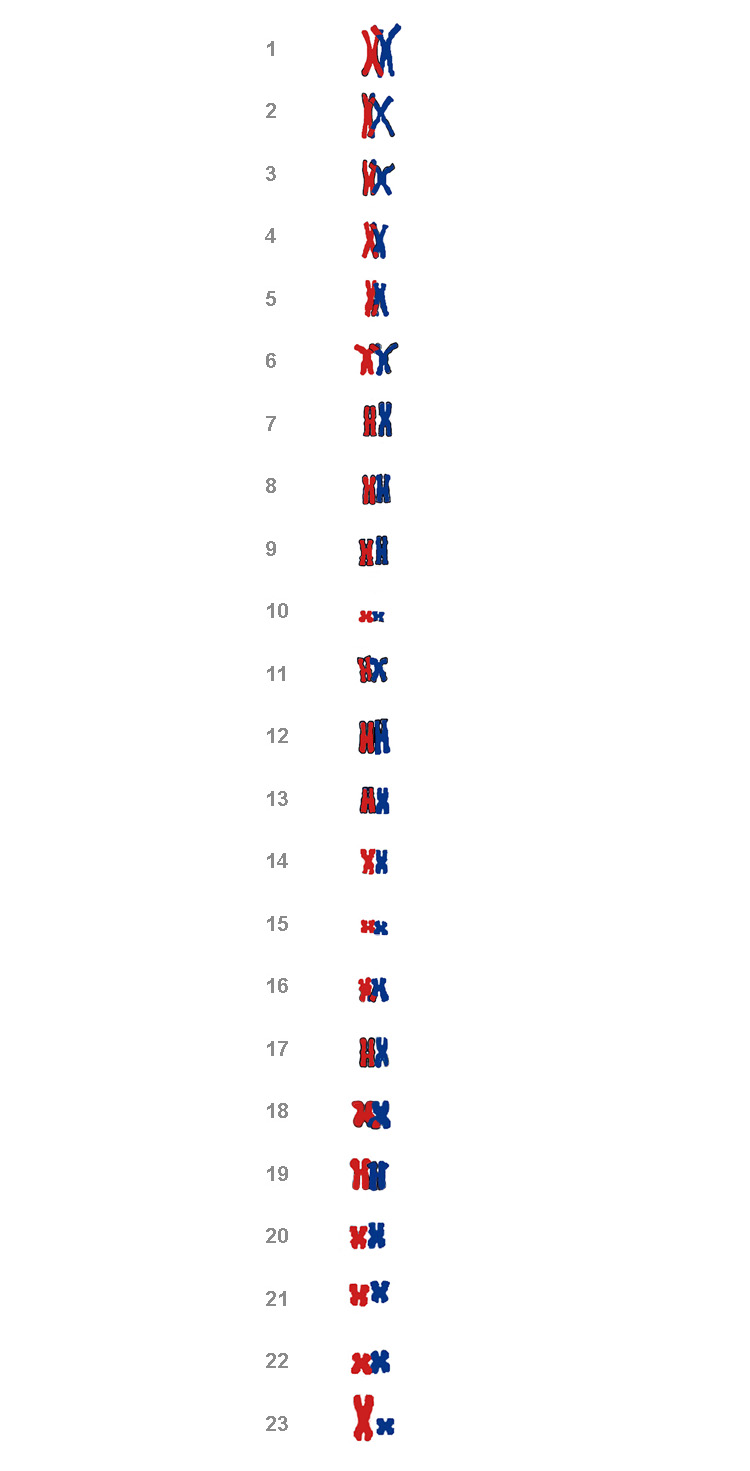
The cell then splits to form two cells.
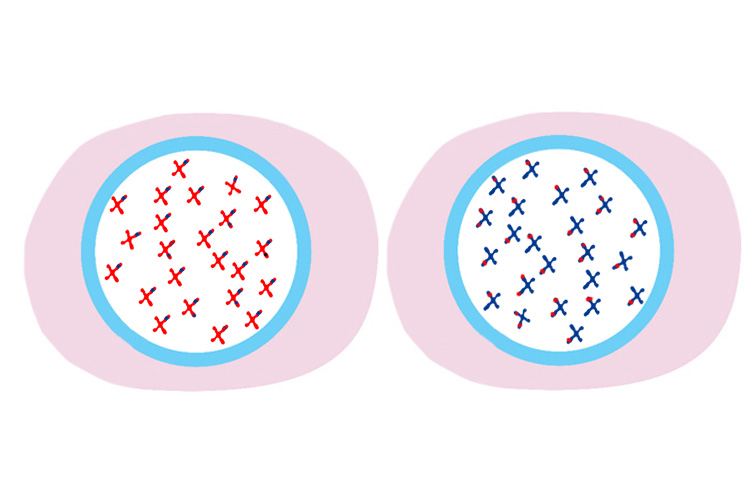
These cells then split again to form 4 cells with 23 chromosomes in each one.
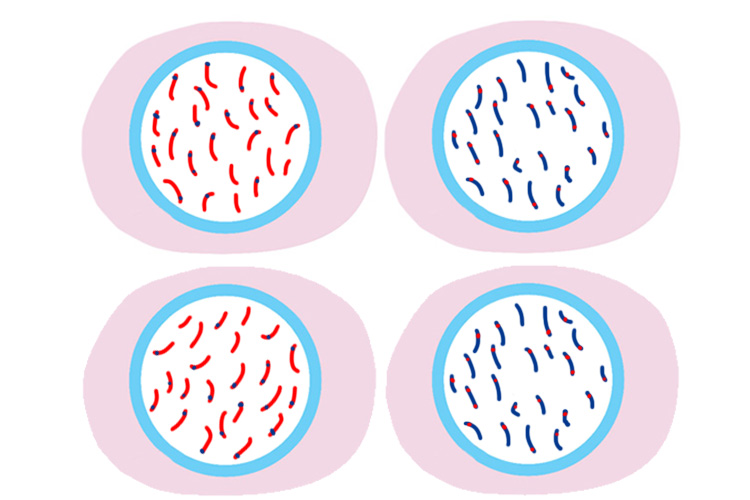
We have four haploid cells (haploid is half the number of original chromosomes). Haploid is a cell having a single set of unpaired chromosomes.
We now have 4 cells containing 23 chromosomes.
If a woman produces meiosis this would be 4 eggs
If a man produces meiosis this would be 4 sperm.
The woman and man can now continue sexual reproduction, joining the man's sperm to the woman's eggs.
Normally one sperm fertilises one egg only.
Simplified, if we look at just 4 chromosomes, meiosis would be as follows:
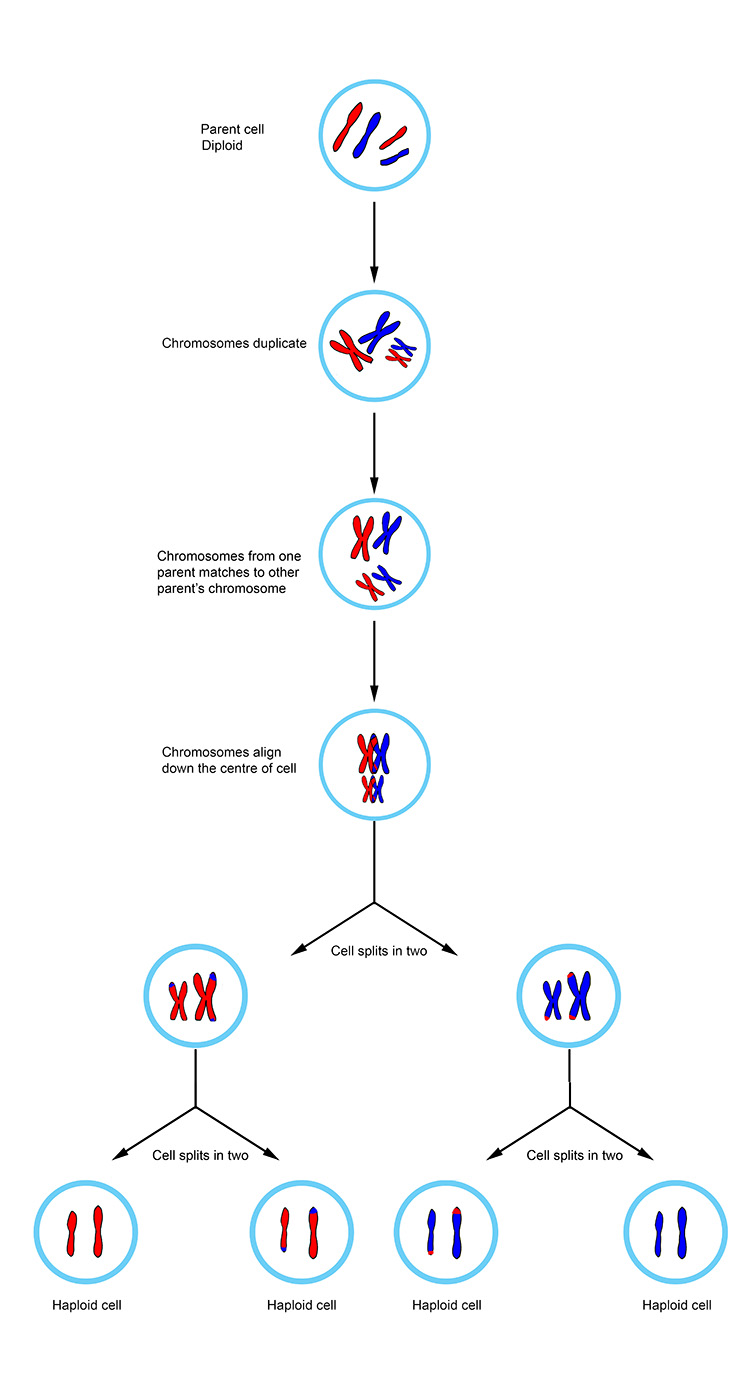
This produces 4 cells which form into either sperm if produced by the male or eggs if produced by the female.
These cells are called sex cells or gametes, and in humans will contain 23 chromosomes.
In humans the 4 cells that are created by meiosis each contain 23 chromosomes as follows:
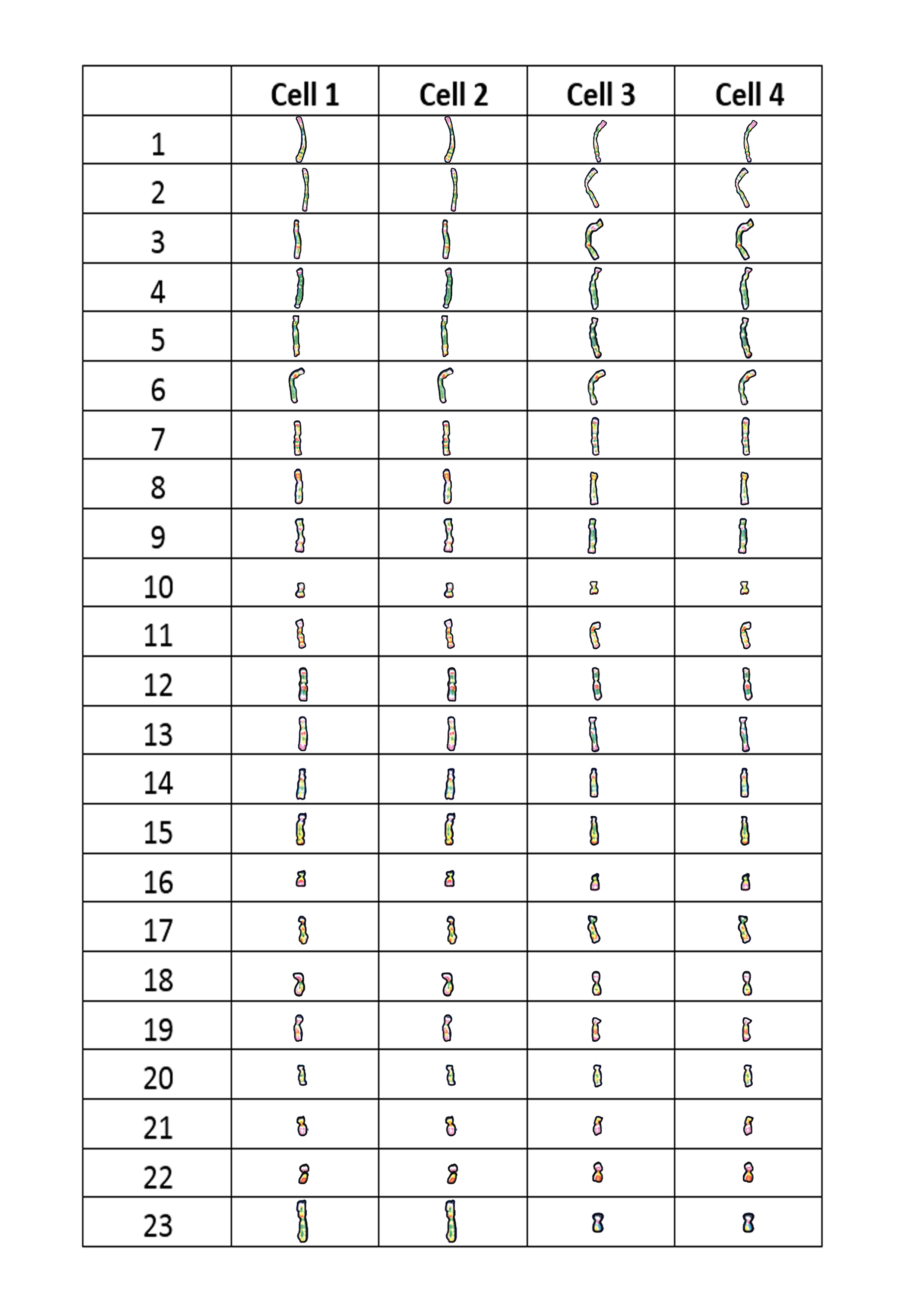
Chromosome 23 will either be an X or Y. Your mothers egg cell can only contain an X chromosome but your fathers sperm cell can provide an X or Y see below:
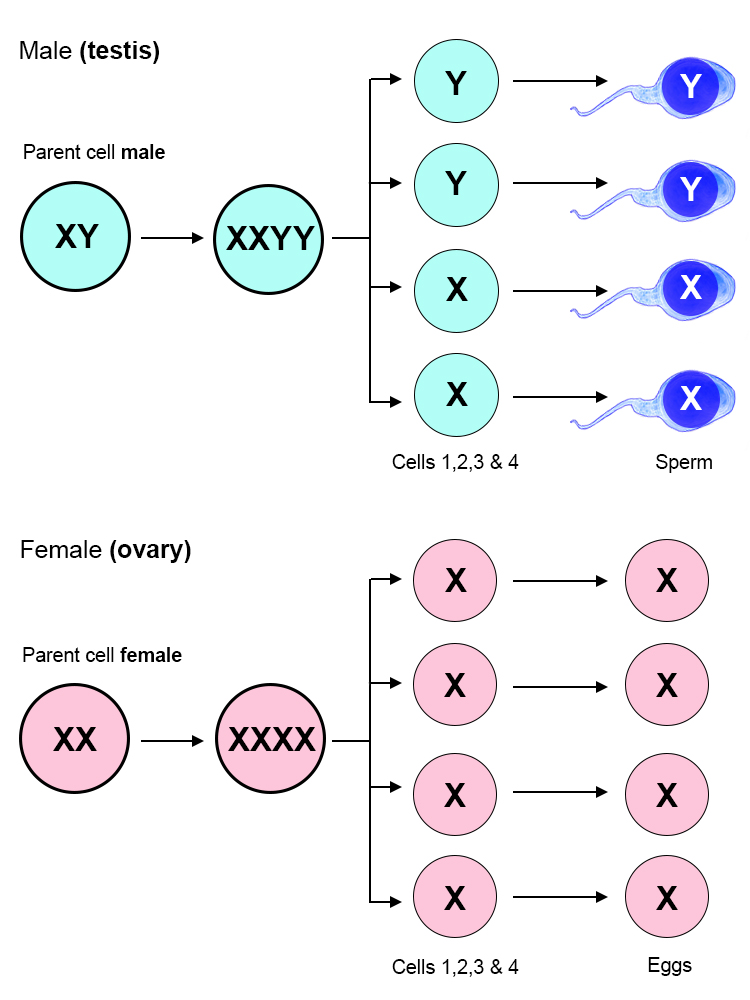
The probability of inheriting a male or female chromosome can be shown in a punnet square.
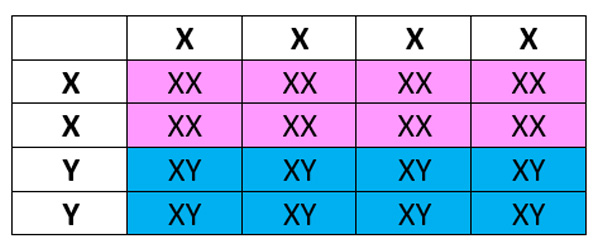
The probability of producing a male or female is 8 out of 16, or 1 out of 2.
Therefore there is an equal chance of their being a girl or a boy.
NOTE
This is usually shown by using only two sperm and two eggs in the punnet square as follows:
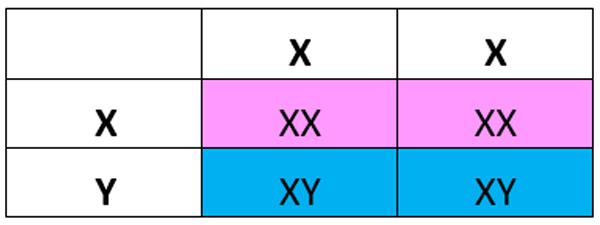
Here the probability of producing a male or female is 2 out of 4, or 1 out of 2.
Therefore there is an equal chance of there being a girl or a boy.




